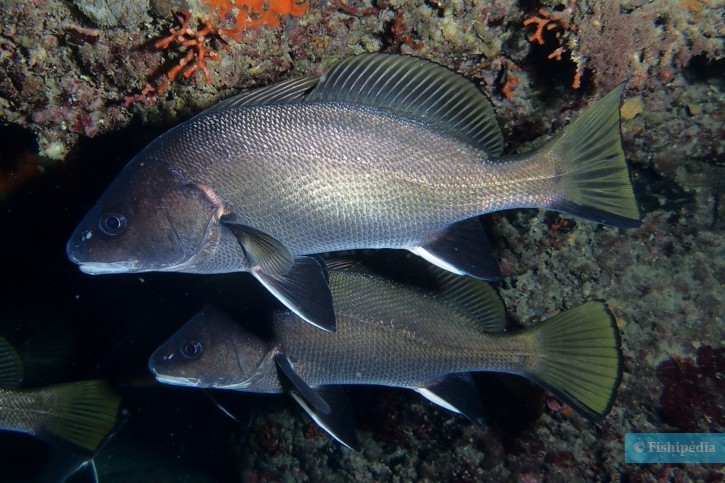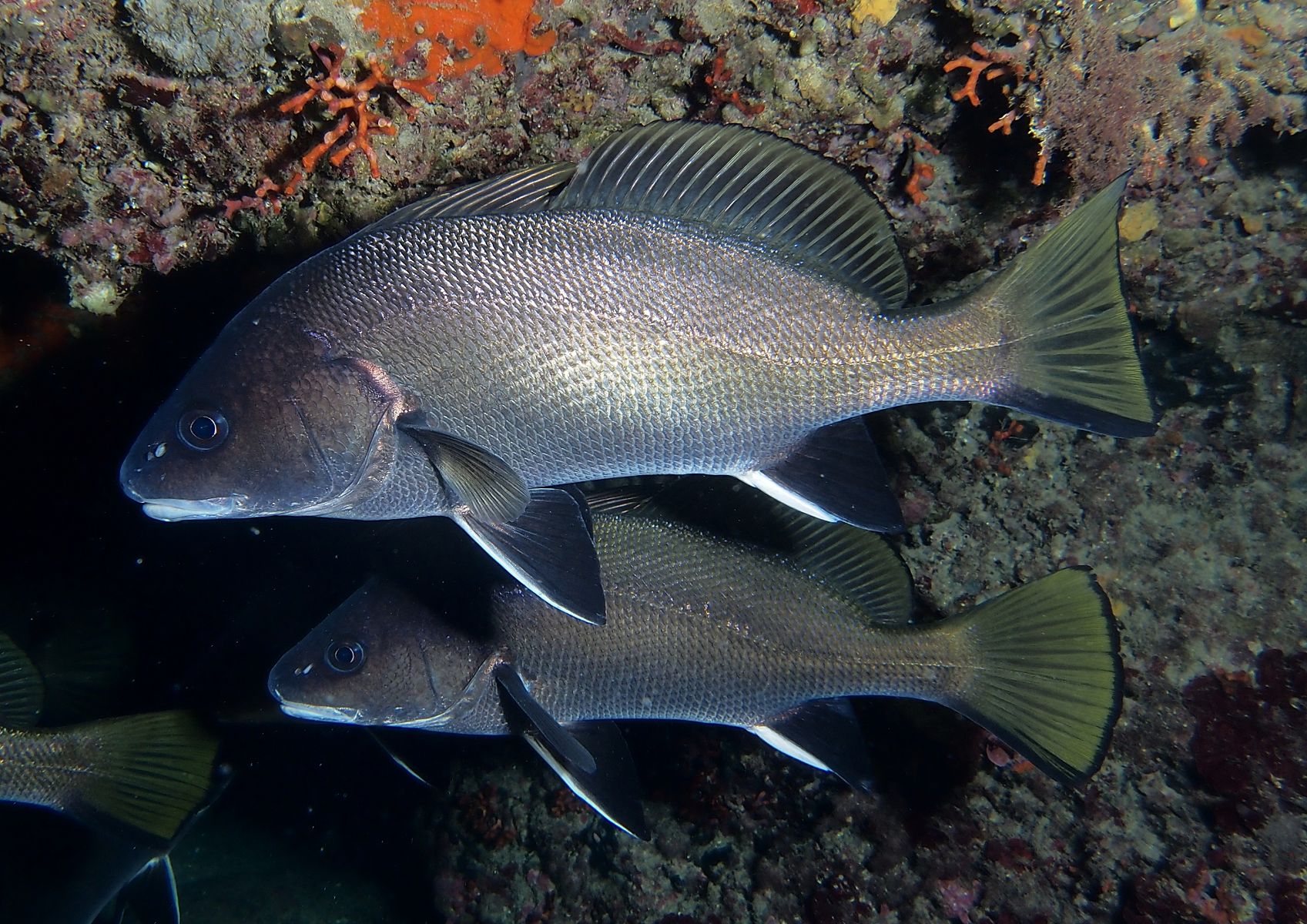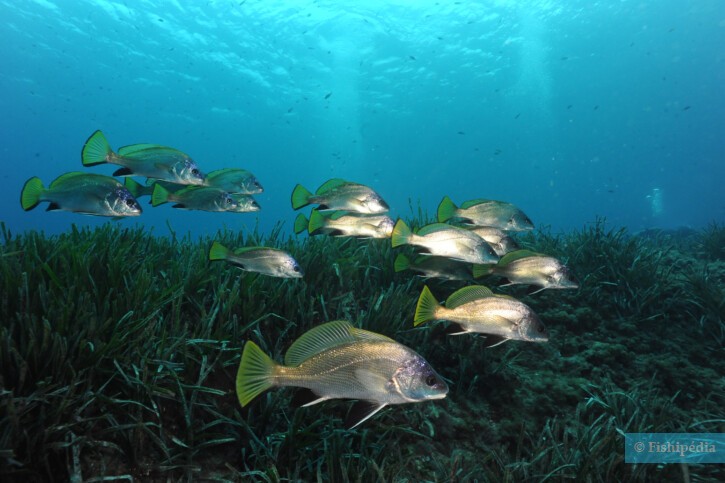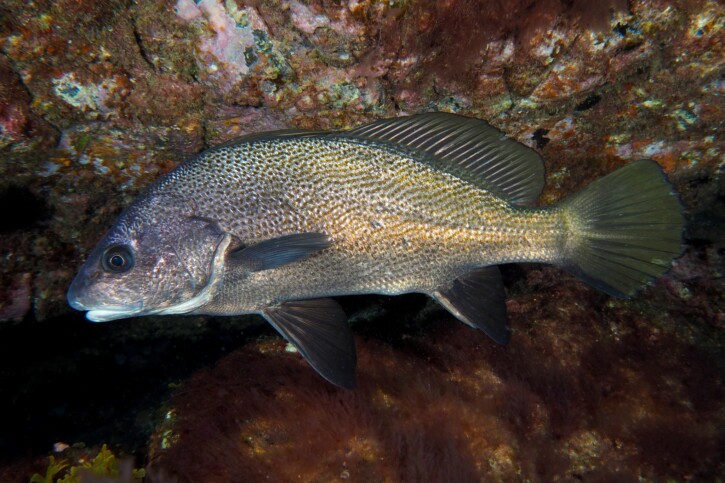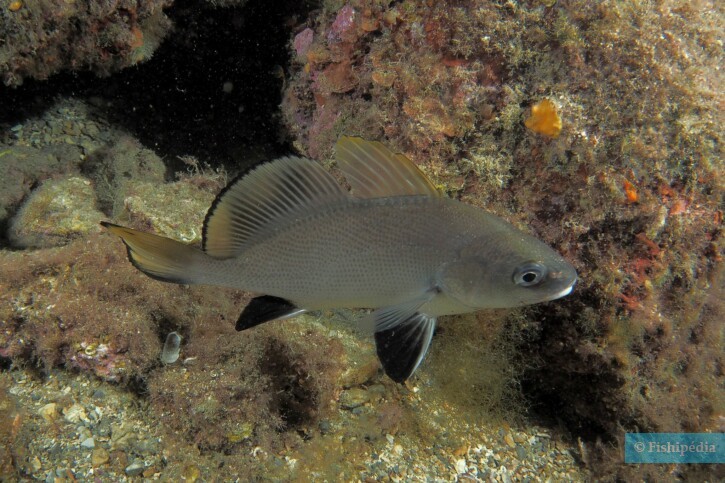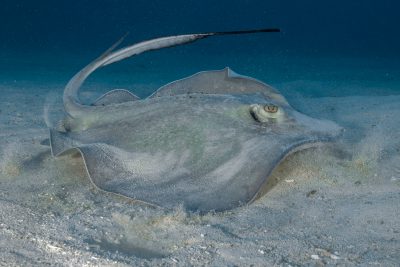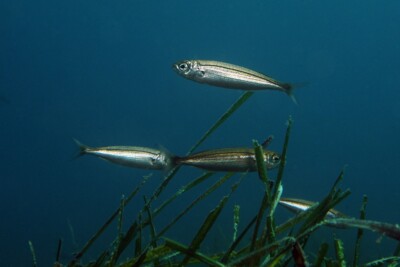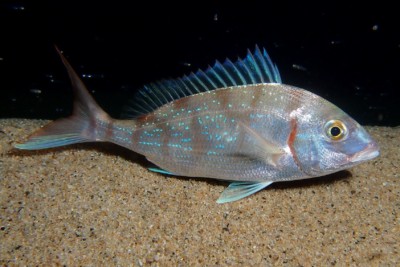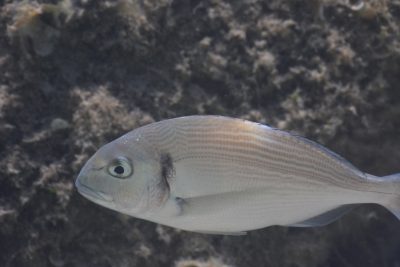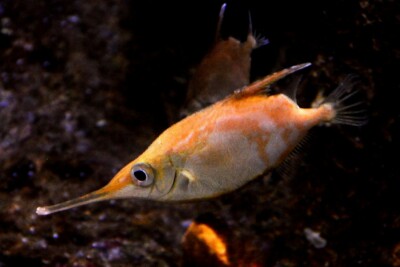Introduction
The Scianea umbra, commonly known as the brown meagre, is a fish species found in the Mediterranean Sea, Black Sea, and the eastern Atlantic Ocean coastline.
The population of this species has declined significantly in the Mediterranean Sea, likely due to overfishing.
Who is it?
Morphology
-
Average size28 cm
-
Maximum size70 cm
-
Longevity21 year
-
ShapeOval
-
Average size28 cm
-
Maximum size70 cm
-
Longevity21 year
-
ShapeOval
How to recognize This fish ?
The brown meagre has a characteristic Ombrine shape. Its lower body is flat while the back is rounded in a semi-lunar shape.
It has a dark to light coppery color, with yellow dorsal and caudal fins, and black pelvic and anal fins with a white border on the first ray.
Sexual dimorphism
There is no apparent sexual dimorphism in this species. However, it is possible to observe males stimulating females during the breeding season by gently pushing on their cloaca with their heads.
Behaviour & Life cycle
-
dietcarnivorous
-
Sociabilitygregarious
-
territorialNo
-
Way of livingnocturnal
This species is known to emit sounds easily audible by humans.
The brown meagre is a fish that lives in groups of varying sizes. It moves slowly and sometimes remains still near the bottom, cliffs, or in underwater caves.
This species, with a calm temperament, is often seen during the day, motionless with its head pointing downwards. At night, the brown meagre goes hunting.
Reproduction
-
Reproductionovipare qui pond en eau libre
The brown meagre is an oviparous fish that spawns in open water. The eggs and larvae are pelagic.
Harmless species
This species does not represent any particular threats to humans when encountered in its natural environment.
Origin and distribution
What is its habitat?
Natural environment characteristics
-
Depth1 - 200 m
Biotope presentation
The brown meagre is typically found at depths of up to 200 m. It usually inhabits shallow waters above rocky or sandy bottoms.
Species of the same biotope
To go further
Sources & Contributions
Participation & Validation
The Fishipedia team and specialist contributors are committed to providing high-quality content. However, although the information comes from scientific sources or testimonials from specialists, the cards may contain inaccuracies.

Adrien Falzon
Translation
Translation done with the valuable contribution of our translators, who make this information available to a wider audience. We sincerely thank them for their commitment.
Scientific partners
Tags
Species of the same biotope
